If you have a small piece of land or even a backyard, you can have a few chickens. It is a trend that is becoming more en vogue in suburbs across the country. Chickens are not just for the rural families anymore. With the price of food constantly on the rise, more stories about the conditions chickens are living in and the food recalls that seem to come out every week, raising your own food just makes good sense.
[the_ad_placement id=”in-text-1-type-r”]If you want to know how to raise chickens, you are in the right place.
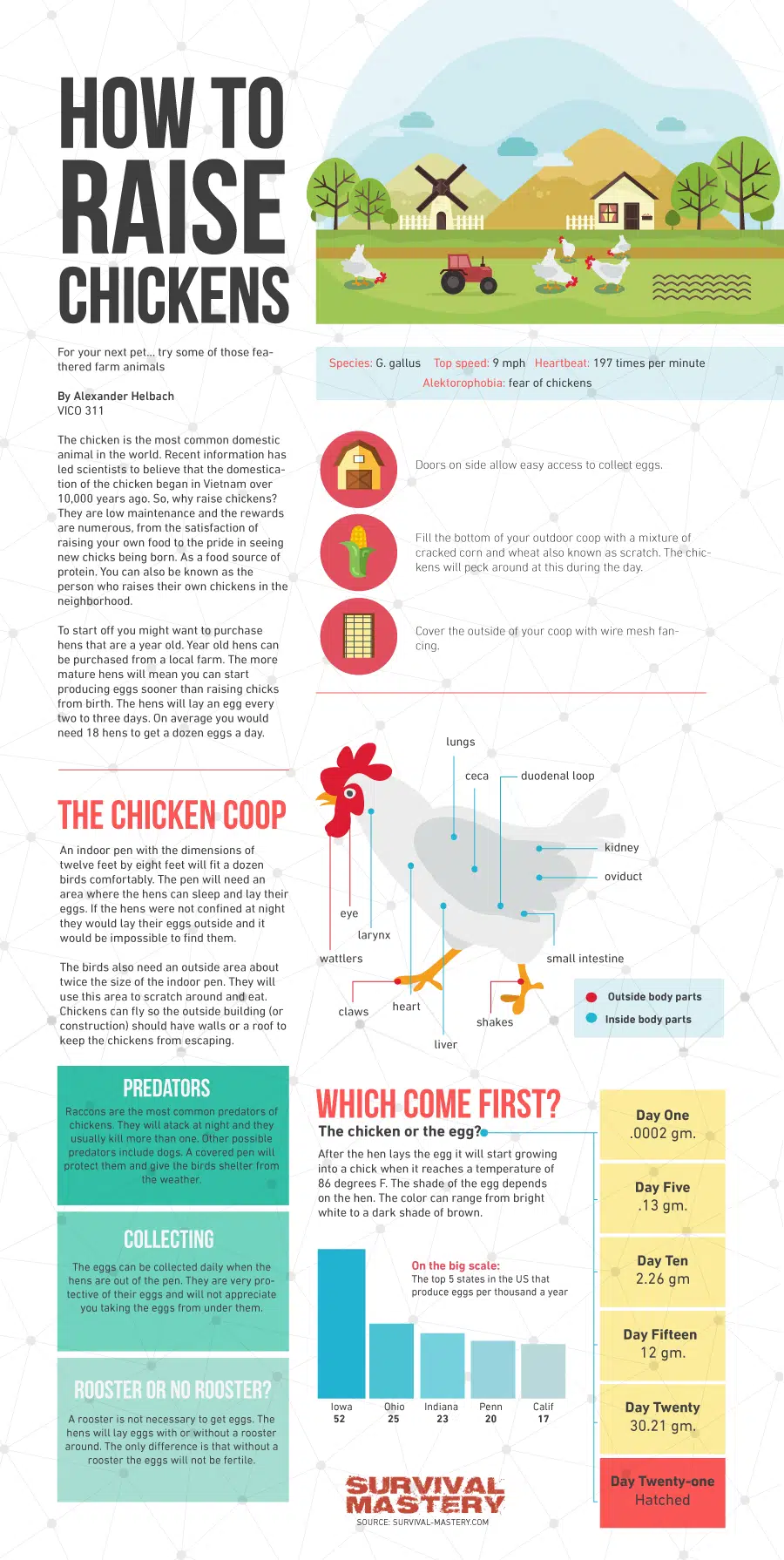
Fortunately, chickens are pretty self-sufficient. They don’t require a great deal of work and they are not free-loaders. Chickens provide you with food and help control bugs in your yard or garden. They are like mini-cultivators as well and will help keep weeds down. Chickens are inexpensive and a valuable resource. Check out how you can make chickens work for you.
What kind of chickens do you need?
There are two types of chickens you will need to choose from when you head to the farm store to pick up your chicks in the spring. There are chickens that are bred with the purpose of becoming dinner for you and chickens that are bred to be excellent egg layers. Not all chickens make good egg layers.
See also: How To Raise Ducks: Keeping Them All In A Row
We are going to discuss some of the more popular breeds of chickens. However, in reality, all chickens will lay eggs and all chickens can be used for meat. It is all about getting the biggest bang for your buck.
Meat chickens
Meat chickens are basically chickens that get nice and fat within a short amount of time. What you need to know about how to raise meat chickens is the fact you will typically only have them for about six months at the most before it is time to butcher them. Young chickens taste better. Chickens that approach that one year mark tend to be a little tough. You could put them in the stew pot, but ideally, you want young chickens in order to get the best meat possible.
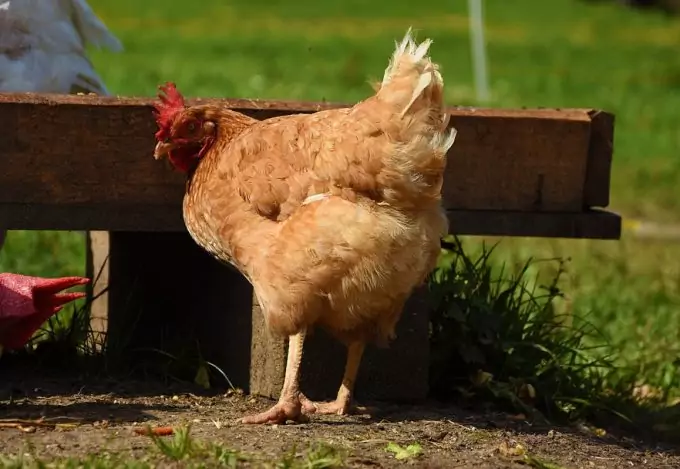
There are two main types of meat chickens; broilers and roasters. Broilers are around the 4 to 5 pound mark, while roasters are 8 to 9 pounds. Broilers do tend to have problems with walking around. They gain a lot of weight quickly and their little legs cannot support them. Fast growing, the kind that need butchering by 8 weeks, are going to have the most problems with the legs. Chickens that cannot walk will be sickly and will not be suitable for eating. Slow growing, 12 week butcher, are a little easier to manage.
You want chickens that will mature and fatten up quickly so you are not wasting a lot of money feeding them. This is why broilers are very popular. You won’t be feeding them for long.
Some of the best breeds are as follows;
- Cornish hens—some varieties, like the Cornish Rock, are ready to butcher in about 8 weeks
- Red Broiler chicks
- New Hampshire chickens
- Delaware
- Black Jersey Giant
Egg layers
If you need to know how to raise chickens for eggs, you will want to choose the hardiest, hardest-working hens possible. There are some breeds that will produce 360 eggs a year on average and some breeds that are a little lazier and only produce about 300 eggs a year. It is really personal preference.
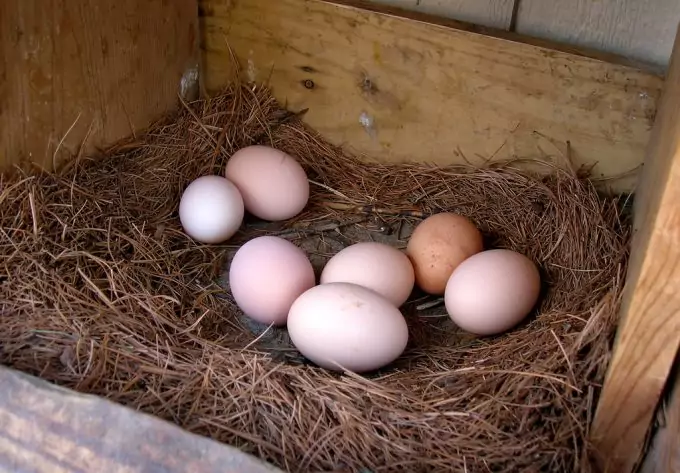
Some of the most popular egg laying birds are as follows;
- Rhode Island Red
- Leghorn—absolutely the most reliable egg layer you can get
- Buff Orpington
- Black Rock
- Ameraucana or Easter Eggers—egg colors are blue, green and beige
Dual purpose chickens
As was mentioned earlier, there are some breeds that can be used as egg layers or butchered for meat around that six month mark when they are nice and plump. When you are buying chickens, it is often a gamble with some of the varieties. Meaning, you never know when you may get a rooster or two. Most people only want a single rooster in their flock or no rooster at all. If you live within city limits, you may not be allowed to have a rooster. Not everybody enjoys the cock-a-doodle-doo at the crack of dawn.
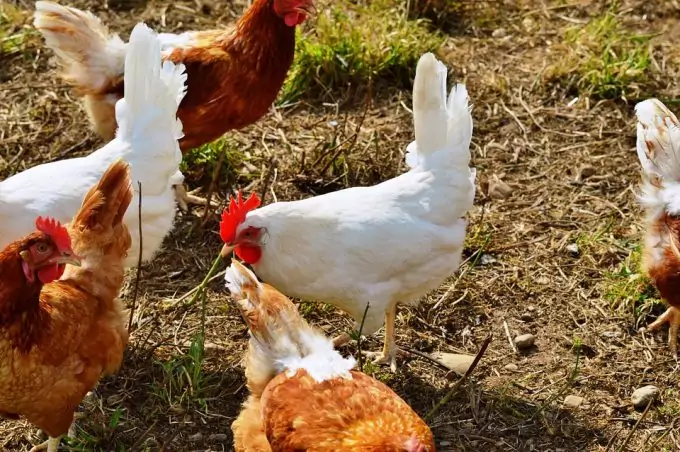
You will be able to identify which of your chicks are going to be roosters by six months. If you buy dual purpose, often referred to as heritage breeds, you can butcher the roosters for meat and keep the hens for eggs. You will discover many of the egg laying breeds make this list.
[the_ad_placement id=”in-text-2-type-r”]Some common dual purpose breeds are as follows;
- Rhode Island Reds
- Barred Rock
- Buff Orpington
- Black Australorp
- Speckled Sussex
How many chickens do you need?
Now that you know what kind of chickens you need, you need to figure out how many chickens you need to provide you with the food you are aiming for. This is truly going to depend on the size of your family, the space you have (will cover in next section) and just how much you are going to rely on your backyard chickens for meat and eggs.
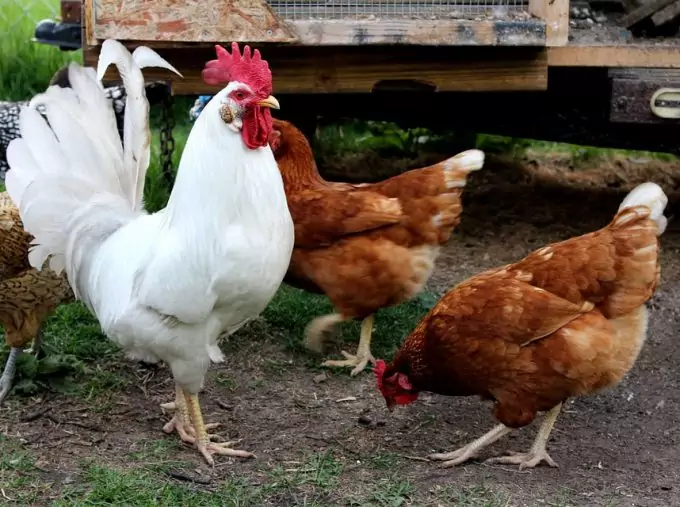
If you are raising chickens solely for eggs, a small flock of chickens, up to five, is plenty for the average family. Most of the breeds mentioned in the egg layer category, will lay eggs every day. That means you can expect anywhere from 30 to 35 eggs a week. That is pretty significant. You can often sell your eggs, to offset the cost of feeding the chickens if you find you have far too many. You can always choose to butcher a couple if you realize the egg production is overwhelming.
If you are raising broilers, raising ten at a time is pretty easy. They are small chickens and they will be ready to butcher within a couple of months. However, ten broiler chickens is only going to be enough for a couple of meals for a family of four. If you are raising the larger variety, ten roasters is enough for ten weeks, assuming you have chicken once a week.
How much space do you need?
There is no right or wrong answer for this. Many people prefer free range chickens. Free range doesn’t necessarily mean the chickens are left to wander around over several acres. In fact, most chickens prefer to stick close to their coop. Free range basically means the chickens have a good size area to roam about, scratching and looking for bugs.
Your backyard is plenty of space. Many people will use something called a chicken tractor. Basically, it is a fenced area that you move around the yard. It protects the chickens from predators and confines them to a specific area. This is a great way to fertilize your lawn, do a little weeding and take care of any bugs that are in the grass.
For a flock of five chickens, you would need about 100 feet of roaming space. Ideally, you want to allow for about 15 feet of space per chicken. It can be a little less and it can obviously be more. The trick is to make sure you are not confining them to a small area where they don’t have the room to move about or have worked the ground to the point there is nothing left but chicken poop.
Choosing the right coop?
There are all kinds of chicken coops out there. You can make your own with some lumber and chicken wire or buy a wooden one. Here is a link to a video that gives you the plans to make your own.
https://www.youtube.com/watch?v=EK94Yq5qXE4
Plastic coops are pretty popular among backyard chicken owners. The plastic variety is pretty easy to keep clean and they come in a variety of styles and even colors. Some of the coops are designed to look like mini-houses.
What it comes down to is size. Size matters. You need your girls to have room to move around. If the quarters are too cramped, you risk disease and fighting. Allow at least three square feet of space for each chicken. You also need perches in the coop for the girls to sleep at night. They will huddle together, but they should be allowed ten inches of perch space each.
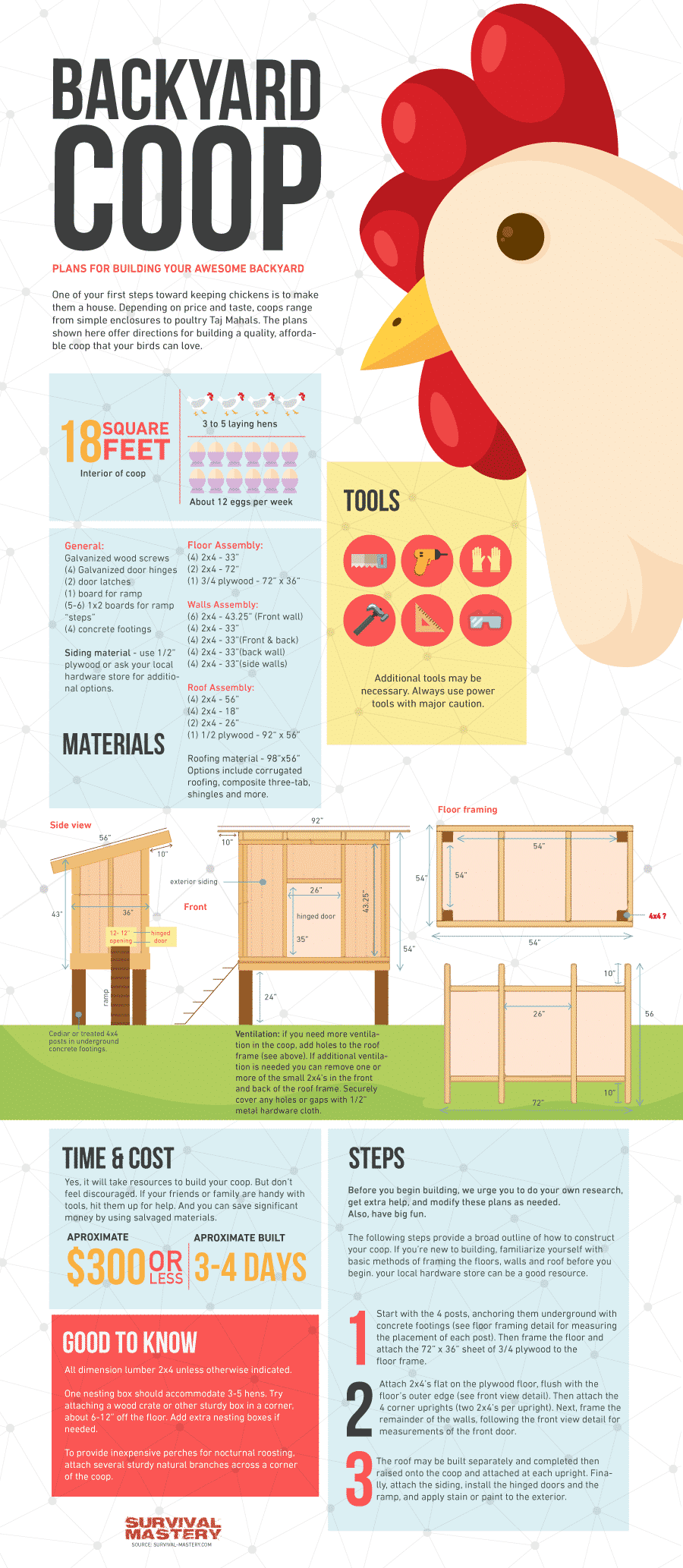
Another element of your coop is the nesting boxes. If you only have five laying hens, you only need a few boxes. They will typically not all lay at the same time. In fact, you may have four nesting boxes, but they will likely choose their favorite and they will all take turns laying in the same box. The box should be about 8×8 inches. They want to feel safe and cozy while they take care of business. They also like their privacy.
Feeding your chickens
You must feed your chickens a healthy diet to ensure they gain the weight needed to become good meat birds and to ensure they have the nutrition needed to produce eggs. Chickens need a healthy diet that includes lots of protein. This encourages egg production and will help put the pounds on your meat birds. You can buy poultry pellets at your local feed store. The pellets are packed with protein and other necessary nutrition to keep the chickens healthy.
You can supplement the chickens’ diet with scratch, which is ground corn. If the chickens have limited space, scratch is going to be very important for your egg layers. They need the exercise of scratching at the ground to stimulate egg production. Corn is essentially a fattening agent so be careful you don’t overfeed the chickens, especially the meat birds. You don’t want them to get too fat, too soon.
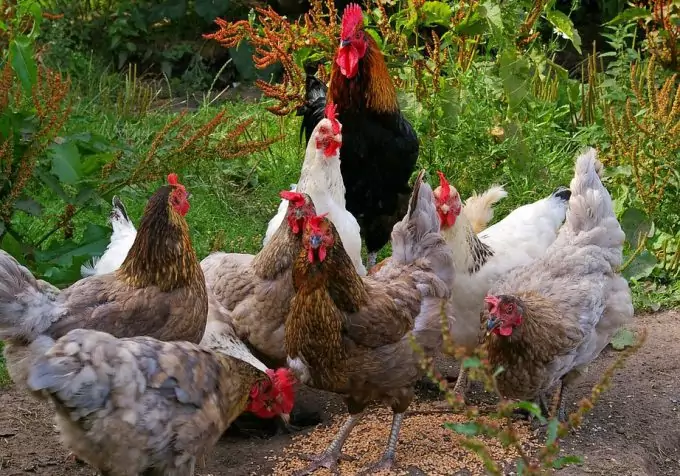
The chickens should be able to eat all day. Feeding them in the morning is great, but it also may be helpful to feed them in the late afternoon. You want them to go to bed with a full belly. As they sleep and their food digests, the egg is being made. This is why a lot of chickens will lay their egg in the morning. It takes a full day for an egg to be produced inside the chicken.
Letting the chickens scratch and eat bugs and weeds all day is going to supplement their diet. Try keeping the chicken run over a patch of grass or in a weedy area. Table scraps are also a favorite for chickens. Avoid giving the chickens meat, garlic and onions. They will eat just about anything. The core of the lettuce you chopped, celery hearts and the ends of carrots are all excellent for chickens.
Chickens will appreciate treats like mealworms and yogurt from time to time as well. You can buy mealworms at your local feed store. Throw a small handful out and watch the chickens go wild trying to eat them. Yogurt is great for keeping up their intestinal health.
Breeding chickens
If your goal is to be completely self-sustainable, you will need to learn a bit about chickens and what they need to produce chicks. If you have a rooster, nature will take its course. However, certain breeds are simply not good mamas. They get bored and will not sit on the eggs the full 21 days that is required to hatch them. Typically, the dual purpose breeds are better for breeding chickens then meat birds or laying birds.
Your hens will need a quiet place to build up their clutch. If you have several hens that are laying and you have a rooster in your flock, you can help the mother-to-be build up her clutch faster by putting those eggs under her. Depending on the size of the chicken, she will probably want 8 to 15 eggs in her clutch. She will not get off the eggs for 21 days, except for a quick drink and bit of food. She will be okay. If you notice an egg has been kicked out from under her, trust nature. She probably knows the chick died or isn’t viable and she isn’t going to waste her time.
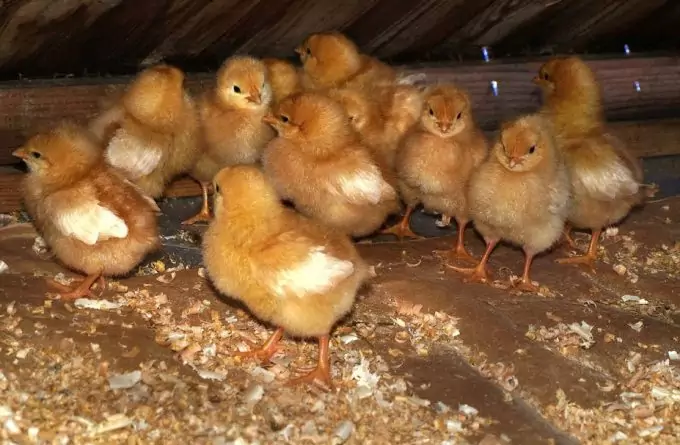
Once the chickens hatch, you need to keep the babies separated from the rest of the flock. Sadly, chickens are not kind to the young and will peck at them and kill the babies. Let mama do her job. Now, if you end up with a mother who hatches the chickens then loses interest (very common) you will need to take over. Bring the chickens into the garage or house and set a heat lamp on them. They need to be kept very warm for the first six weeks of life.
Many people will choose to use incubators to hatch the eggs. This eliminates the problem of a mother abandoning her clutch overnight and the whole process is interrupted. Incubators are a great way for you to hatch and sell baby chicks to help supplement your income.
Tips for egg laying
If you are new to the chicken game and your hens don’t seem to be getting the hang of things, there are a few tricks you can use to help them out. Despite egg laying being instinctual, it can be difficult for hens to figure out where you want the eggs and how often you want them.
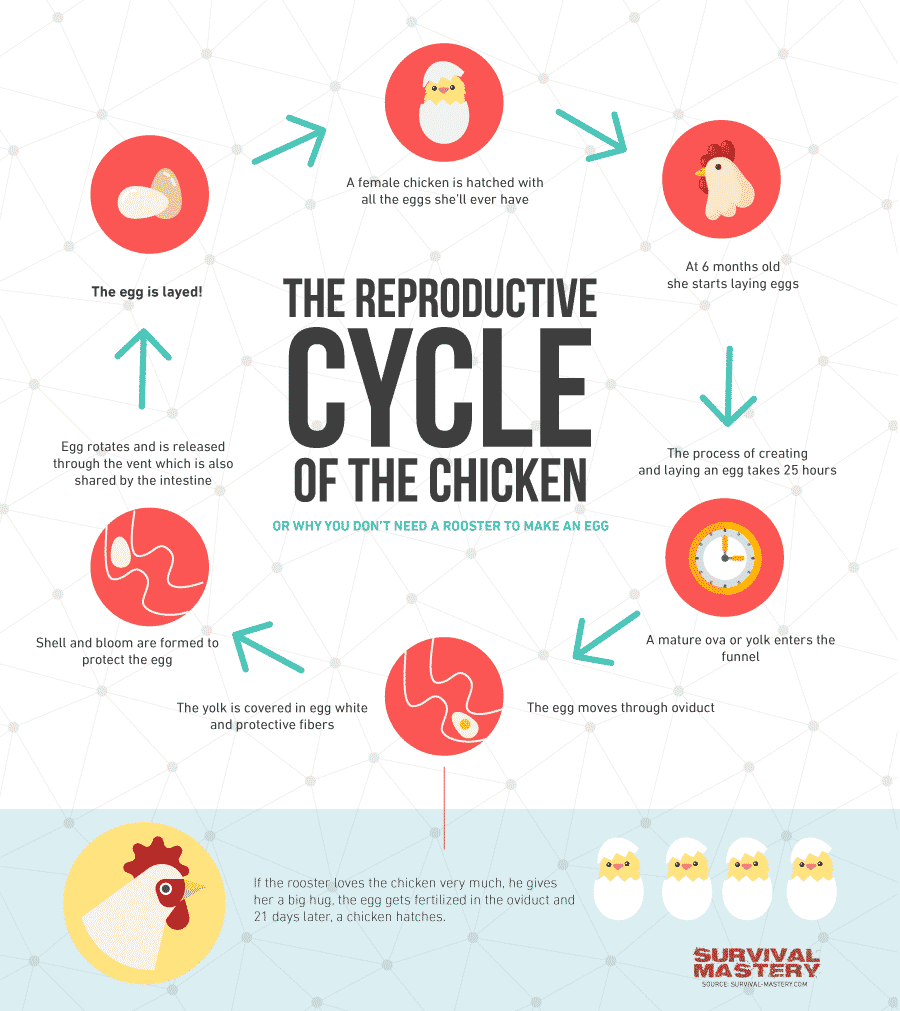
The chickens must be healthy and happy in order for them to successfully produce eggs.
- Teach the chickens where you want the eggs to be laid in the nesting boxes by using plastic Easter eggs. They are followers. They will notice the eggs in the boxes and figure out that is where they should be depositing their eggs as well. Once the chickens are regularly laying eggs in the boxes, you can remove the plastic eggs.
- Keep the nesting boxes clean. The hens will not want to settle into a box that is full of poop. Typically, they will not poop in the box where they lay. However, if one of the hens is using a different box to lay in, she may not be quite as respectful.
- If the chickens don’t seem to be laying and they are at least eight months old, they may not be getting enough protein. Up their protein intake by giving them more mealworms. You can also scramble some eggs and feed it to them. It may seem cannibalistic, but it works.
- Chickens need a certain amount of daylight in order to lay. If it is December and your hens stopped laying, it is probably because they do not have adequate light. A red heat lamp in the coop is the answer. The red lamp keeps the hens warm and gives them some light without overwhelming them with too much light from a standard heat lamp. It is a good idea to put the light on a timer. The chickens need about 12 to 14 hours of daylight. As the days get longer, you can depend less on your lamp.
General information
There are some little problems that may arise during your chicken rearing. Most problems can be quickly and easily taken care of.
[the_ad_placement id=”in-text-3-type-r”]Other problems, like a disease that is running rampant through your flock, is a little harder to deal with and generally results in starting over.
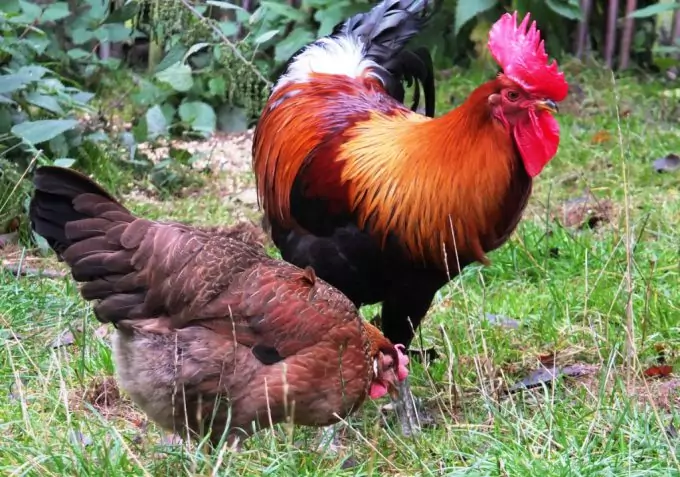
Before you jump to the conclusion you have failed and you cannot handle raising chickens, here are some additional tips that can help you solve common problems.
- Chickens are eating their own eggs. This is every chicken owner’s worst nightmare. Unfortunately, there is very little you can do to stop a chicken from eating eggs. Fortunately, only a handful will actually do it. The rest of the flock will leave the eggs alone. You can try to thwart the egg eater by collecting the eggs several times a day. Don’t give them the opportunity. If that doesn’t work, you need to be diligent to find your egg eater. Once the culprit is identified, she becomes a meat bird.
- Eggshells are soft or non-existent. If you pick up an egg and end up getting a slimy mess, your girls are lacking nutrition. Feeding them some oyster shells a couple times a week will help strengthen the shells. The soft shells are due to a lack of calcium. You can grind up the egg shells you get when you are cooking eggs and feed those back to the chickens. Never give the chickens large bits that resemble eggs. This will encourage egg eating.
- The chickens are fighting. Hens will argue and have little spats here and there over a prime piece of dirt or food. Many people are firm believers in keeping a rooster in the flock to limit these fights. A single rooster will generally be the boss and keep the girls in line.
- Chickens that seem to be losing a lot of feathers on their backsides can be alarming. It is important to remember chickens will molt for the first time around a year and a half of age. They will look pretty rough with patches of bare skin all over. Usually, the chickens will molt once a year in the fall. Some breeds will not lay eggs during the molt or slow down significantly. This is normal. Their bodies are putting the energy into the molt instead of egg production. They should return to normal after the molt.
- Mites and lice on chickens is a dreaded problem. The problem can become so bad, it will kill the chickens. Some signs include bare spots, skinny chickens, diarrhea and generally looking unwell. Keeping the coop clean and dry is your best line of defense. There is a powder you can sprinkle in the coop to help keep the lice and mites at bay.
Use the powder on the roosts and nesting boxes as well. The chickens will do what they can to take care of the problem as well. They will take dirt baths to get rid of the pesky bugs. Make sure the chickens have a nice patch of loose dirt they can take their bath in.
Raising chickens is a rewarding hobby that will put food on the table while helping out your garden. Chicken poop is prime fertilizer and it is organic! Many gardeners will allow chickens into the garden for about 15 minutes every evening to let them eat the bugs and weeds while providing some fertilizer.
If you are ready to become a little more self-reliant and want to grow your own source of protein and meat, chickens are the answer. They are easy to care for and very inexpensive to raise.
For more tips on how to live off the land and survive, see our earlier post on this important topic.






It is true that if you want to sell good quality chickens, you must be concerned with the cleanliness. Chickens’ health depends on its environment. I visited a poultry farm once, and the chickens looked nasty to me. By the way, I am planning to raise chicken too, but I’ll be raising them for the eggs – not the meat. Would it be fine to start raising 30 hens on my 70 square meters backyard?
Have you heard about the Marek’s disease? There’s this one chicken from a farm we have visited who was infected by a Marek’s disease when it was young. The chicken (according to the farmer) has been recovered and shows no symptoms up to this date. However, I read that once you get it, you will be infected for life – it will never go away. What do you think?
I am concerned about the climate. Raising my own poultry and animals has always been one of my goals, but does hot weather affect the chickens in any way? I heard climate is crucial and extreme hotness can affect chickens negatively, but is that true?
Yes, hot climate can have severe impact on poultry performance.